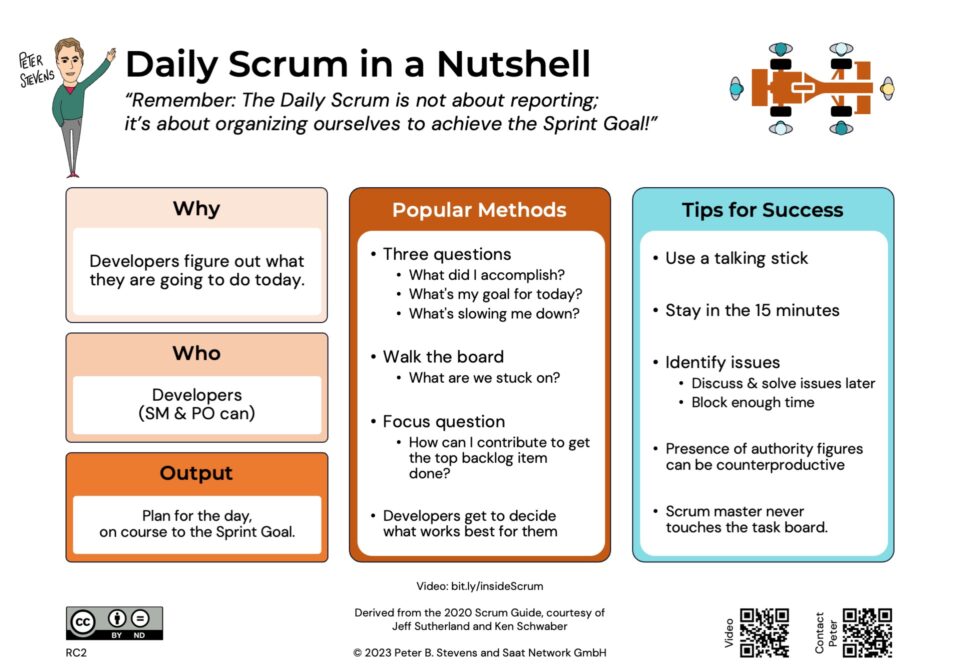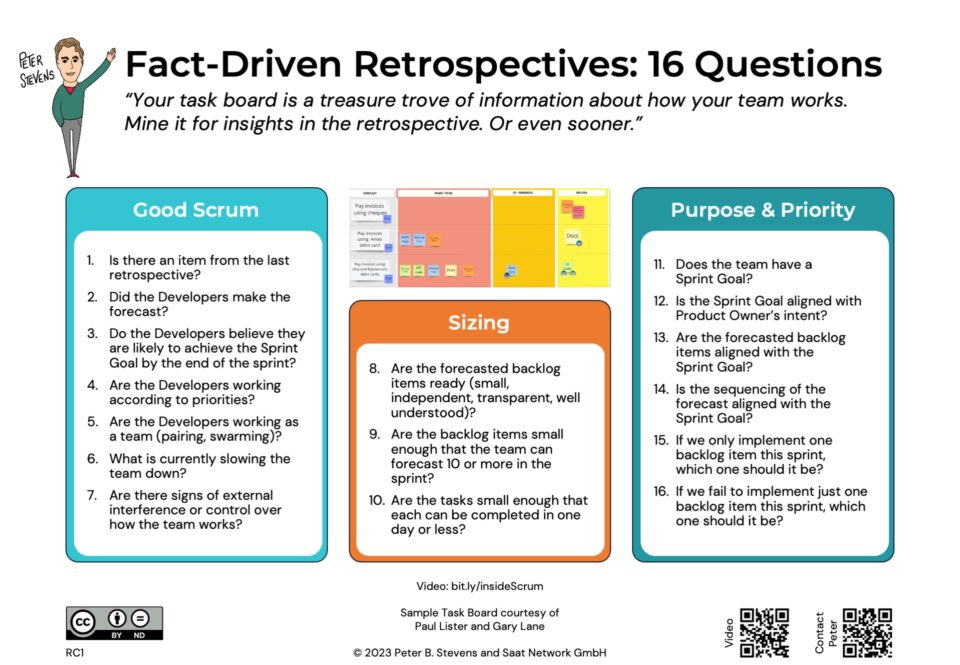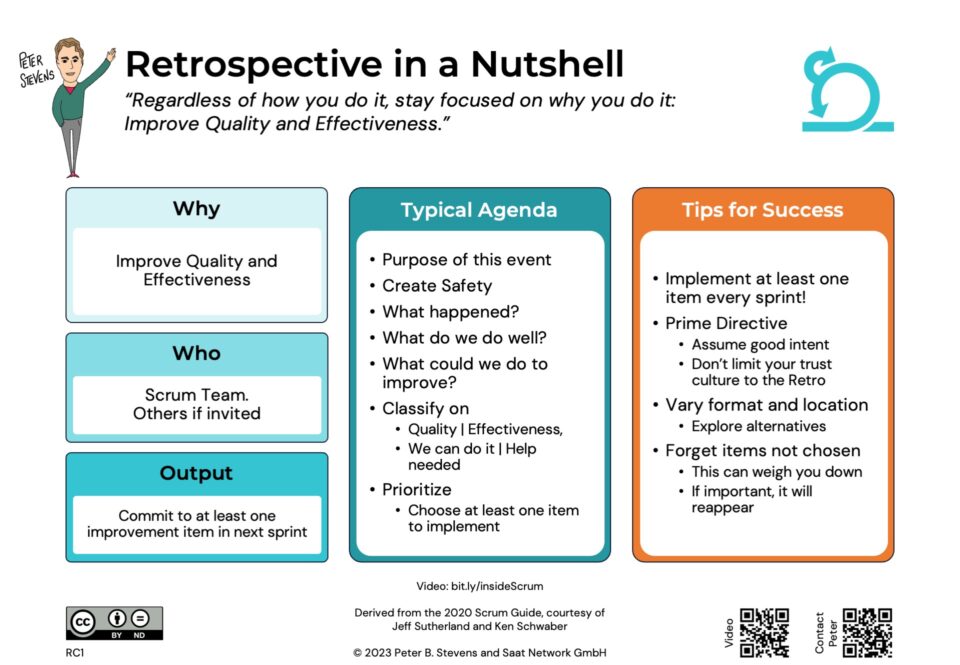/ch/open Event: Scrum, Success and Quality
18-04-2008Rational Scrum?
22-04-2008I was recently confronted with a sprint dilemma: At the start the sprint, the team committed to delivering a certain amount of functionality within the defined time period at the defined level of quality. Sometimes bad things happen. In this case, there was a heavy support load — getting the previous sprint’s functionality formally accepted. This was preventing the team from working on the goals for the current sprint. The Scrum-Master recognizes this in a timely fashion. What happens next?
Certainly the Scrum-Master should give early warning to the Product Owner. But what alternatives can he or should he offer? Theoretically one could:
- Increase the staff
- “Do what it takes” to finish the sprint
- Prolong the sprint
- Finish the sprint at the date planned, completing less work than committed.
The right answer is almost always 4) Finish the Sprint on the date planned. But why?
Options one and three both break the sprint contract and raise the cost of the Sprint. Increasing the staff raises the issue of training and integrating the new staff. Brooks taught us 30 years ago that adding people late in a late project makes the project later. So it’s not really an option.
“Doing what it takes” usually means compromising on quality to achieve quantity, often accompanied by overtime. It also breaks the contract, but in a much subtler fashion. The increase in “productivity” is accompanied by an increase in defects, which are much more expensive to identify and correct later in the release, deployment or operational phases than if they were caught in development. Overtime is not only not sustainable, it also compounds the effects of working under pressure. So it might be an alternative in some cases, but the side effects are probably not what you want.
Prolonging the Sprint is tempting. The quality is maintained, but there are other serious disadvantages.
- It is an administrative nightmare – all the sprint meetings which occured like clockwork have to be rescheduled, with the accompanying potential for scheduling conflicts
- It falsifies the velocity – it looks like the team is making better progress (as measured in points per sprint) then it really is
- It deprives the Product Owner of the chance to inspect progress and adjust priorities until the functionality is completed
- It discourages an examination of the issues behind the delay
This last issue is actually true of all the options (except for finishing the sprint as planned). If the project is not going as planned, it is important to recognize the fact and ask the “why?” questions to determine the causes.In our case, there are some serious problems getting to “done” (and I am starting to have real reservations about using scrum within a waterfall. It’s better waterfall, but it’s still a waterfall!)
Only by asking way can we determine and address the real issues dragging down the team’s productivity.
So, take your lumps, get a true picture of the velocity and start asking the right questions to remove impediments, increase staff availability, solve the problems or fix whatever problems the answers to the those questions reveal.
BTW – there are few cases where prolonging the sprint might make sense. Well, I’ve prolonged two sprints. Once was legitamate, once was debatable. But that’s a topic for another post….





2 Comments
I think if you find yourself taking out a majority of the sprint, it means your planning was not successful and you should stop the sprint, and start over with a fresh planning session. Otherwise, I agree with you, the only option is to take the work back onto the backlog to be done in a future sprint.
Hi Corey,
Hmm, I hadn’t thought of breaking off the sprint. It’s certainly a legitimate alternative though.
Cancelling the sprint is fairly violent act. I had always thought of it as a last resort item when the team has no chance of completing the planned work (more for conceptual than operational reasons though).
Cancellation forces an analysis of the issues earlier than if the team waited until the end of the sprint. It carries the same administrative overhead of prolonging the sprint (i.e. potentially rescheduling all appointments — my calendar is relatively flexible, but getting a meeting room can be a challenge!)
A good point! Thank you.